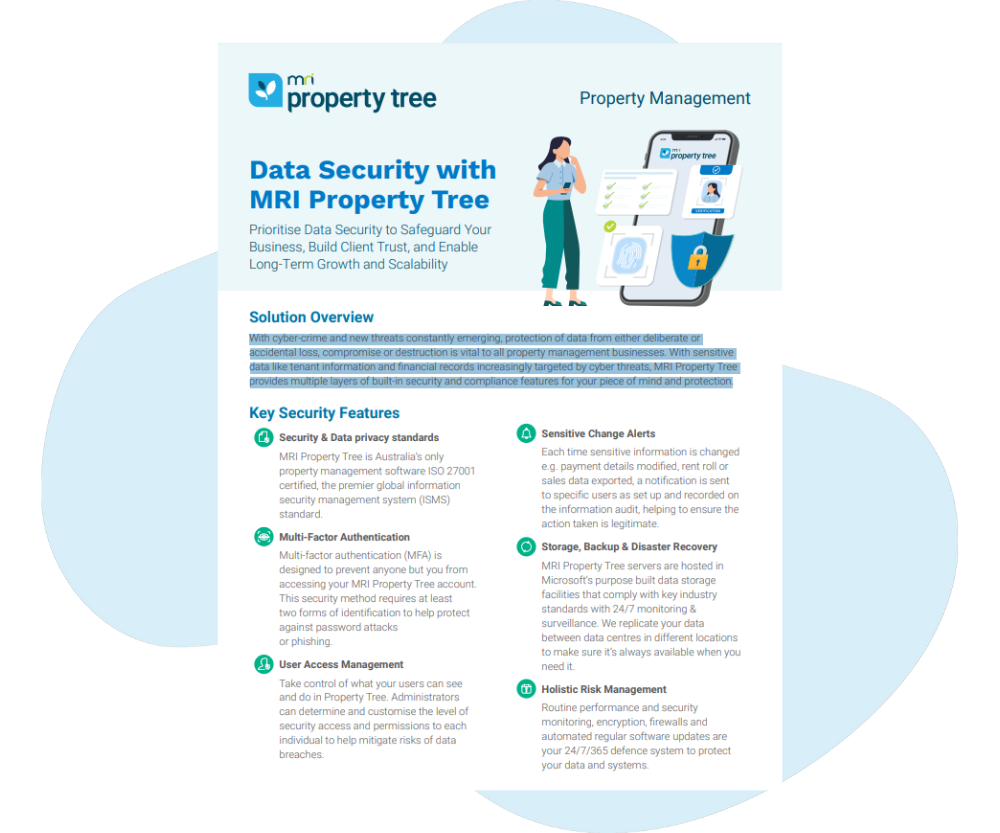What is economic occupancy in real estate?
Economic occupancy is a crucial metric often discussed in property management and investment. Whether you’re a large investment company or a small-time investor, understanding economic occupancy is essential for maximising returns and making informed decisions in the real estate market.
In this post, we explore how this important metric measures revenue potential and drives financial success.
What is economic occupancy?
At its core, economic occupancy serves as a measure for the financial performance of rental properties. It measures the ratio of actual income generated by a property compared to its potential income if all units were leased at market rates. In simpler terms, economic occupancy reflects how effectively a property is monetising its available space.
Real estate investors and property owners typically aim for economic occupancy rates of 90% or higher. For most, this threshold ensures optimal revenue generation, covering expenses and yielding a satisfactory return on investment.
For instance, if a 100-unit complex achieves an economic occupancy rate of 95%, it means that 95 out of 100 units are leased at market rates, maximising revenue potential. Conversely, a lower economic occupancy may signal inefficiencies in property management, leasing strategies, or market conditions.
Therefore, economic occupancy is an important metric for investors and property managers, offering insights into the financial viability and effectiveness of rental property management practices. By monitoring current economic occupancy and taking steps to maintain high economic occupancy levels, stakeholders can optimise revenue streams and enhance the overall performance of their real estate investments.
How do you calculate economic occupancy?
To accurately assess the economic occupancy of a rental property, follow these simple steps:
- Determine gross potential rent (GPR): Start by calculating the total income the property could generate if all units were leased at fair market rates. Multiply the number of units by the market rent for each unit.
For example, in a rental property with 10 units renting at $700 each per month:
Gross potential rent (GPR) = 10 units x $700/month = $7,000 per month
- Calculate actual rent collected: Next, tally up the actual rental income collected for the given period. Consider both the occupied and vacant units, and account for any variations in rent rates.
For instance, if 7 units are occupied with 5 tenants paying $700 each and 2 tenants paying $500 each:
Total rent collected = ($700 x 5) + ($500 x 2) = $4,500 per month
- Compute economic occupancy: With the GPR and total rent collected determined, divide the actual rent collected by the GPR and multiply by 100 to express the result as a percentage.
Using the figures from our example:
Economic occupancy = (Total rent collected / gross potential rent) x 100
Economic occupancy = ($4,500 / $7,000) x 100 ≈ 64%
In this scenario, the economic occupancy for the given period stands at approximately 64%. This indicates that the property is realising 64% of its full income potential based on market rents, considering the mix of tenants and rental rates. Evaluating economic occupancy on a regular basis enables property owners and managers to gauge the property’s financial performance accurately and implement strategies to optimise revenue streams.
Property management software can calculate economic occupancy automatically and use it to create reports and compare alongside other metrics for full visibility of portfolio performance.
What if my economic occupancy is over 90%?
When your property’s economic occupancy surpasses the 90% threshold, it signals a robust financial performance and several positive attributes:
- Efficient management: An economic occupancy above 90% indicates that the property is well-run and managed. Vacancies are minimised, and resources are effectively allocated to maintain tenant satisfaction, occupant comfort, and property upkeep.
- Market-driven rent: Achieving economic occupancy over 90% suggests that your rental rates are competitive and in line with market value. Tenants are willing to pay the asking rent, reflecting the property’s perceived value in the market according to factors including residential property trends.
- Tenant satisfaction: High economic occupancy typically correlates with satisfied tenants. When tenants are content with their living conditions and the services provided, they’re more likely to renew leases, reducing turnover and vacancy rates.
- Solid financial performance: Financially, an economic occupancy exceeding 90% indicates a strong income-earning performance for the property. With most units leased at market rates, revenue streams are optimised, which helps cover expenses and can potentially yield surplus income.
What if my economic occupancy is under 90%?
When economic occupancy is under 90% consistently for a period of more than a few months, it indicates that there might be some underlying issues which need to be addressed.
Why might my economic occupancy be under 90%?
From market fluctuations to operational inefficiencies, understanding the reasons behind suboptimal economic occupancy is essential for devising effective strategies to address them.
1: Rent is too high
This situation poses challenges both for retaining existing tenants and attracting new ones, ultimately affecting the property’s overall occupancy rate.
Existing tenants may struggle to afford the rent if it exceeds the market value. As a result, some tenants may begin to default on payments, leading to a decrease in rental income and potentially higher turnover rates as tenants seek more affordable alternatives. This scenario not only impacts economic occupancy but also disrupts the stability of cashflow for the property.
Moreover, prospective tenants may opt for competing properties offering comparable amenities at lower rental rates. If your property’s rent is not competitive within the local market, it could lead to a higher vacancy rate as tenants choose alternative housing options. This, in turn, directly affects economic occupancy, as vacant units contribute to a lower overall income potential for the property.
Lowering the rent to align with market rates can help ensure that more units are occupied over the long term. While this adjustment may result in a temporary decrease in rental income, it can ultimately lead to higher economic occupancy by attracting and retaining tenants who value affordability and quality housing options.
2: Tenants are defaulting on payment
Despite high physical occupancy, economic occupancy may plummet if tenants fail to pay rent. This is why it’s important to invest in a quality resident screening solution that can ensure your occupants have the means to pay rent consistently. It can help by verifying employment, checking credit scores, and conducting thorough background checks so you can mitigate payment risks.
Unpaid rent may stem from tenant dissatisfaction. In this case, it’s important to address concerns promptly, especially regarding maintenance issues. Timely responses and swift repairs enhance tenant satisfaction and bolster economic occupancy by fostering a positive tenant experience.
3: Too many vacancies
A high number of vacancies directly correlates with low economic occupancy. Several factors can contribute to excessive vacancies:
- Rent disparity: When rental rates are higher compared to similar properties nearby, tenants may opt for more affordable options, leading to vacancies.
- Maintenance standards: Subpar maintenance diminishes tenant satisfaction, potentially prompting them to seek alternative accommodations.
- Security concerns: Inadequate security measures within or around the property can deter potential tenants, exacerbating vacancy rates.
- Economic downturn: During economic downturns, individuals may prioritise cost-saving measures, such as downsizing or seeking cheaper housing options, contributing to higher vacancy rates.
4: Too many incentives
Maintaining a delicate balance between providing incentives and safeguarding long-term economic occupancy is paramount for property owners.
Before offering discounts or concessions, it’s essential to carefully calculate their short and long-term effects on economic occupancy. While discounts can attract new tenants and retain existing ones, their impact on economic occupancy must be weighed against potential losses.
Despite potential short-term dips in economic occupancy, offering incentives is often a strategic move to bolster tenant retention and attract new lessees. The long-term benefits of fostering tenant loyalty and maintaining a stable occupancy rate often outweigh transient fluctuations in economic occupancy.
FAQs about economic occupancy
Property Management Software
Multi-discipline technology for property owners, investors and occupiers.

Data Security with MRI Property Tree
Prioritise Data Security to Safeguard Your Business, Build Client Trust, and Enable Long-Term Growth and Scalability With cyber-crime and new threats constantly emerging, protection of data from either deliberate or accidental loss, compromise or des…
